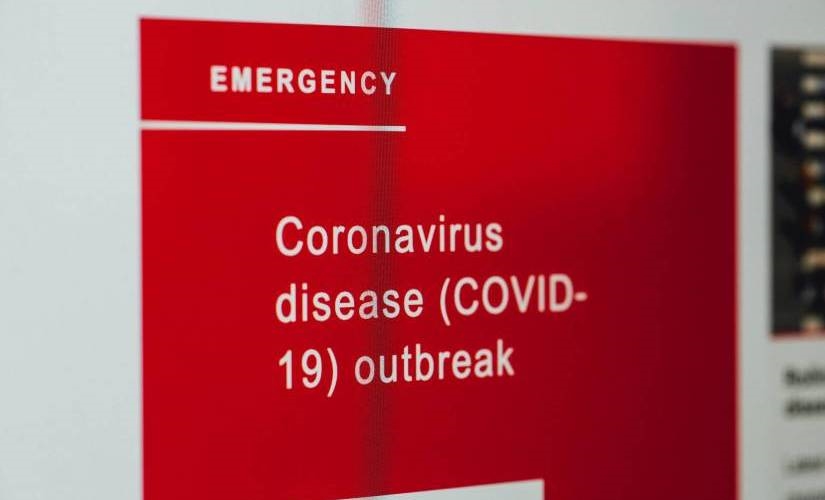5 Digital Health Technologies Helping to Stop the COVID-19 Pandemic
5 Digital Health Technologies Helping to Stop the COVID-19 Pandemic

Taking the world by storm is the COVID-19 outbreak that has been affecting nearly every existing sector from the tech to tourism industries. The viral infection has been traveling across the globe at the speed of light, infecting more and more people day by day. Here are five digital health technologies helping to stop the coronavirus pandemic.
With human-to-human transmission confirmed, akin to the flu — only much worse — the WHO Director-General named the COVID-19 virus a pandemic. During this very real threat, the Centers for Disease Control and Prevention recommended “social distancing.” The social distancing situation may go on for much longer than any of us can imagine — and has prompted a paradigm shift in the management, detection, and treatment of the COVID-19.
At the heart of all angles of the COVID-19 crises is digital health — and the technologies that are often dismissed as too futuristic to be implemented.
As researchers scramble to find cures, and health centers and governments race against time to contain the disease, we’ll take a look at how 5 of those futuristic digital health methods from artificial intelligence to robots that are being put in practice.
1. Artificial Intelligence: giving a head start in detecting spread and infection.
A Canadian company called BlueDot was the first to send the first alerts. Well before the CDC or the WHO issued warnings about the COVID-19 spread. What was BlueDot’s secret sauce detection? Artificial intelligence. BlueDot’s algorithm sifts through information about news reports, airline data, and reports of animal disease outbreaks to detect trends. Now, epidemiologists globally are analyzing these trends. As trends are analyzed, they alert the digital health company’s clients thereafter.
Healthcare professionals are also using A.I. at the forefront in diagnosing the COVID-19 infection. Chinese hospitals are already using such software to detect suspicious signs of lung infection caused by Coronavirus from radiologic scans.
The Chinese tech giant Alibaba also developed an AI solution to detect COVID-19 infections from CT scans of patients’ chests with 96% accuracy in a matter of seconds.
2. Telemedicine: remote healthcare.
While work-from-home has become the norm in many companies and even schools across the world under the thread of the COVID-19, healthcare facilities and personnel are also taking similar cues given their higher risk of infection when dealing with infected patients.
The Bergen New Bridge Medical Center in New Jersey launched a telemedicine service dedicated to screening patients for COVID-19 remotely. Both the CDC and WHO are further advocating for telemedicine to monitor patients and reduce risks of them spreading the virus by traveling to hospitals.
3. Robots in hospitals: the new aides for healthcare professionals.
Given the risk of human-to-human transmission, limiting interaction with others has been recommended, and we’ve all been doing our best in the last two months to follow guidelines. However, it is not a luxury that healthcare professionals can afford, due to the nature of their work. To help reduce the risk of infection among medical staff, the latter have turned to high-tech assistants: robots.
Back in January, doctors in a U.S. hospital used a robot to assist them in taking vitals of a patient infected with the COVID-19 virus so as to minimize exposure. They could communicate via a screen on the robot, which also had a stethoscope to take the patient’s vitals.
Similarly, in China, Shanghai TMIRob has deployed its robots to disinfect wards, intensive care units, and operating rooms. The country has also been using self-driving robots from e-commerce giant JD.com to deliver medical supplies.
4. Gene sequencing: helping in the race to find a vaccine.
Given the novel strain that the COVID-19 represents, vaccines against it have been non-existent since its discovery. Global the fatality rate was, at first, lower than the SARS and MERS outbreaks. We learned that most people would recover without the need for hospitalization, but a vaccine would help ease the mind of the population. Gene sequencing of the virus’ genome has been speeding things up to get a viable vaccine out. All of these sequencings and other research and study requires AI and digital capacities.
Since the first sequencing was done by Chinese scientists, nearly two dozen more studies have been completed. All of the combined studies are needed for the crucial development of vaccines. The Coalition for Epidemic Preparedness Innovations (CEPI) has supported pharma companies with millions in funding for COVID-19 vaccine development. The recipients have already come up with a vaccine candidate which will start human trials in the next few months. The progressions, algorithms, combined global knowledge, and their accuracies can move faster than ever before because of the digital component of the work.
5. Online dashboards: to visualize and track the spread.
There’s a flood of information regarding the COVID-19. It’s challenging for professionals and the public to filter out the relevant information to get pertinent data. To address this issue, the Center for Systems Science and Engineering at Johns Hopkins University launched an online dashboard collecting data from various trusted sources. These sites allow users to easily visualize and track the data on mortality, recovery and spread globally and for specific countries. The aim is to provide the public with an understanding of the outbreak situation, using transparent data sources.
As Chinese President Xi Jinping said, “The fight against the epidemic cannot be achieved without the support of science and technology.”
Conclusion
In conclusion, we are bound to see more and more cases of new technologies (like https://medicalfuturist.com/how digital health technology can help to lend a hand to fight this global crisis, showing the potential of digital health in managing epidemics.
The post 5 Digital Health Technologies Helping to Stop the COVID-19 Pandemic appeared first on ReadWrite.
(43)


